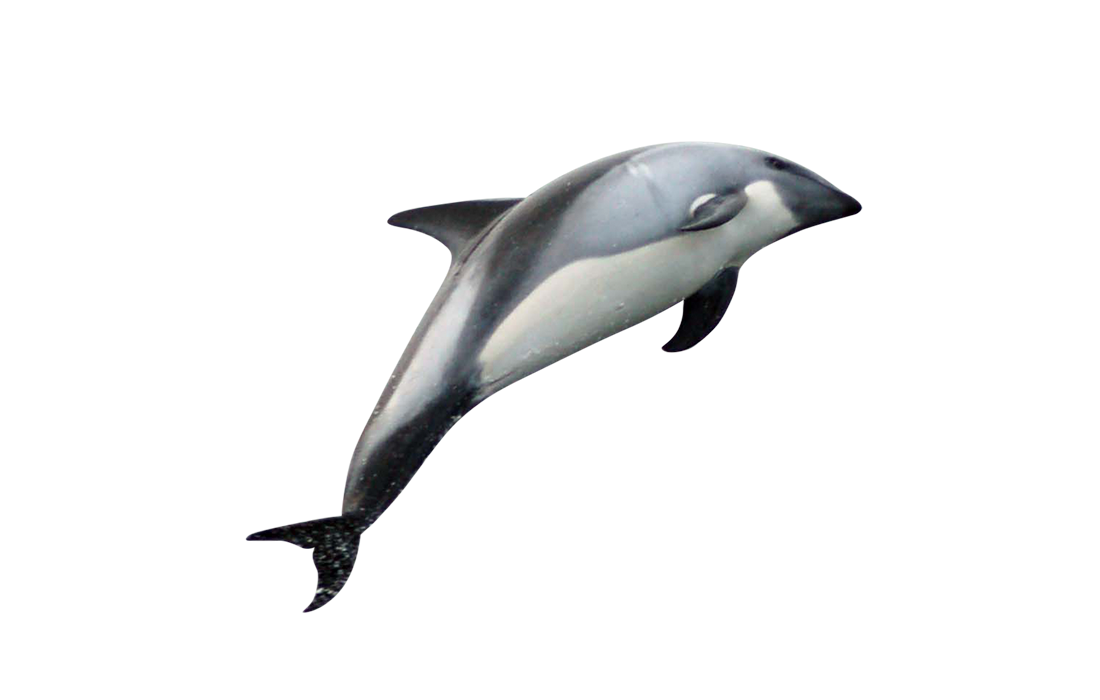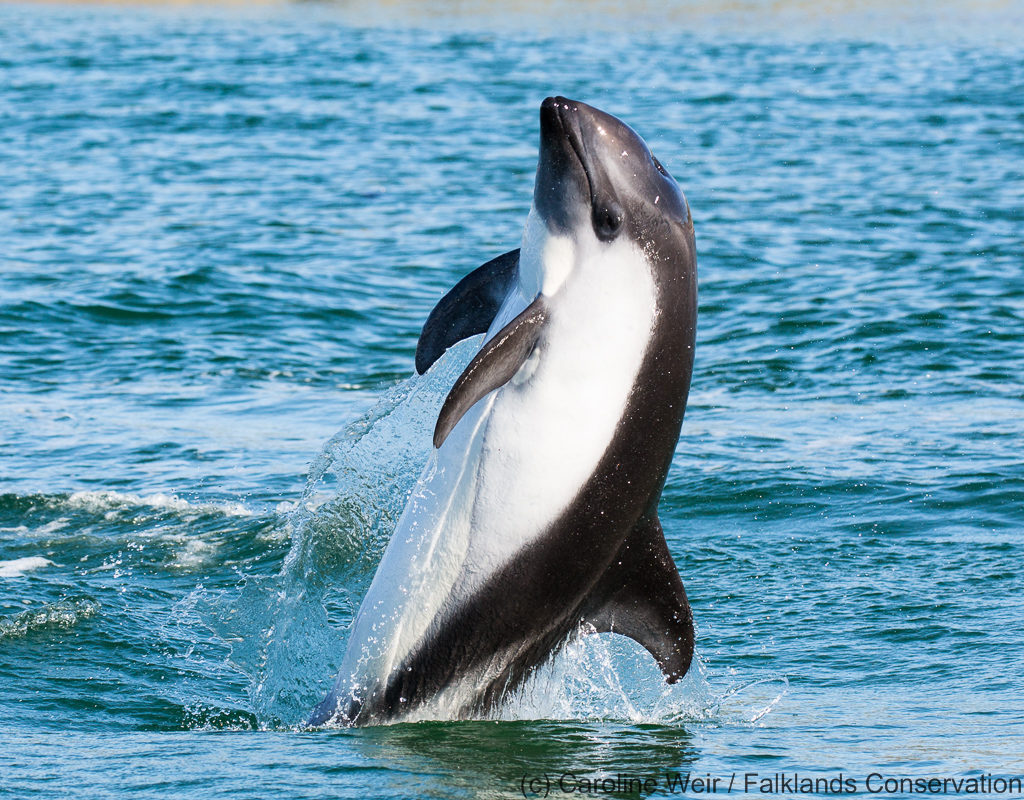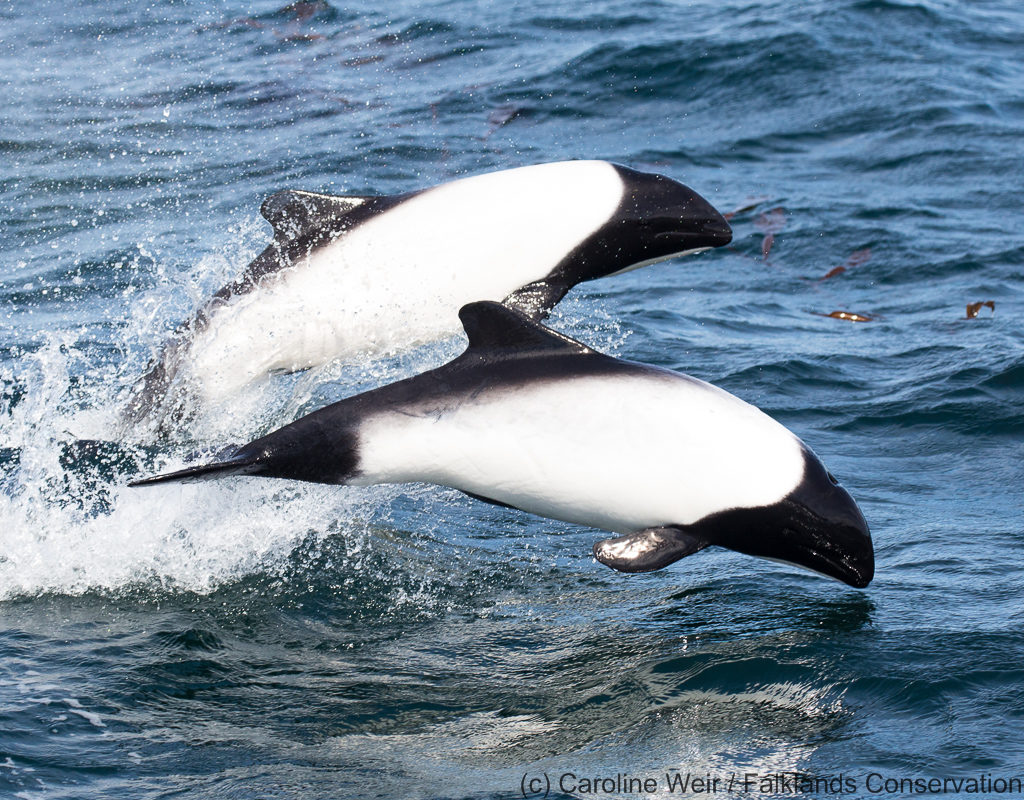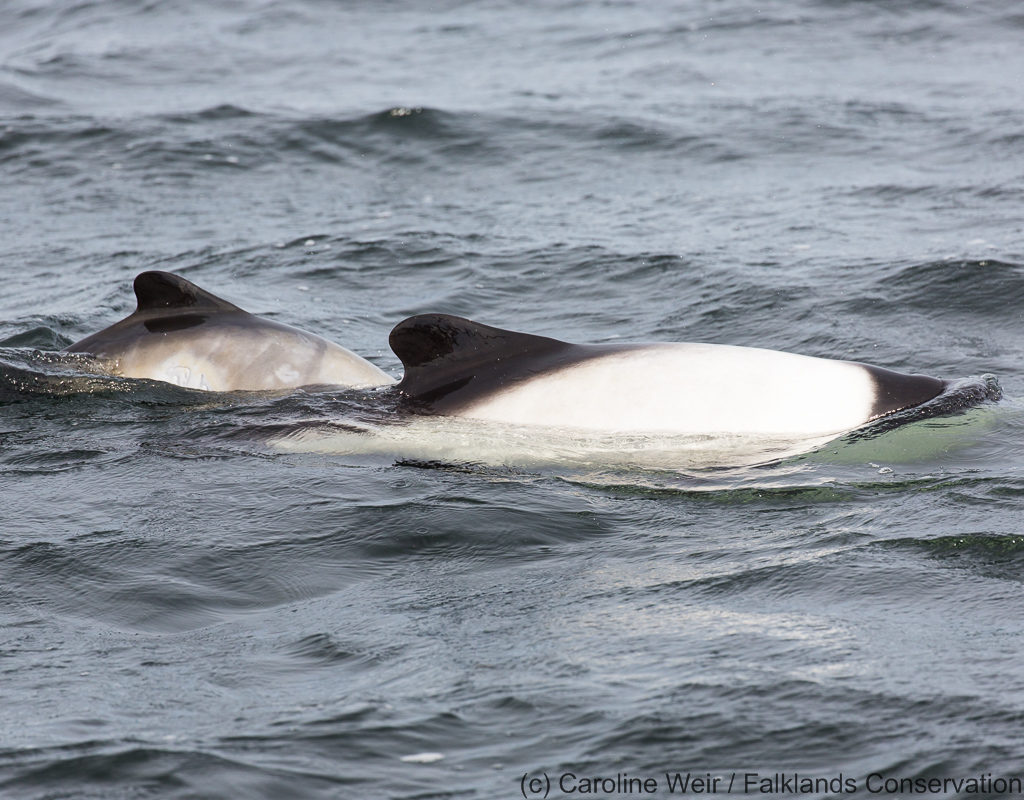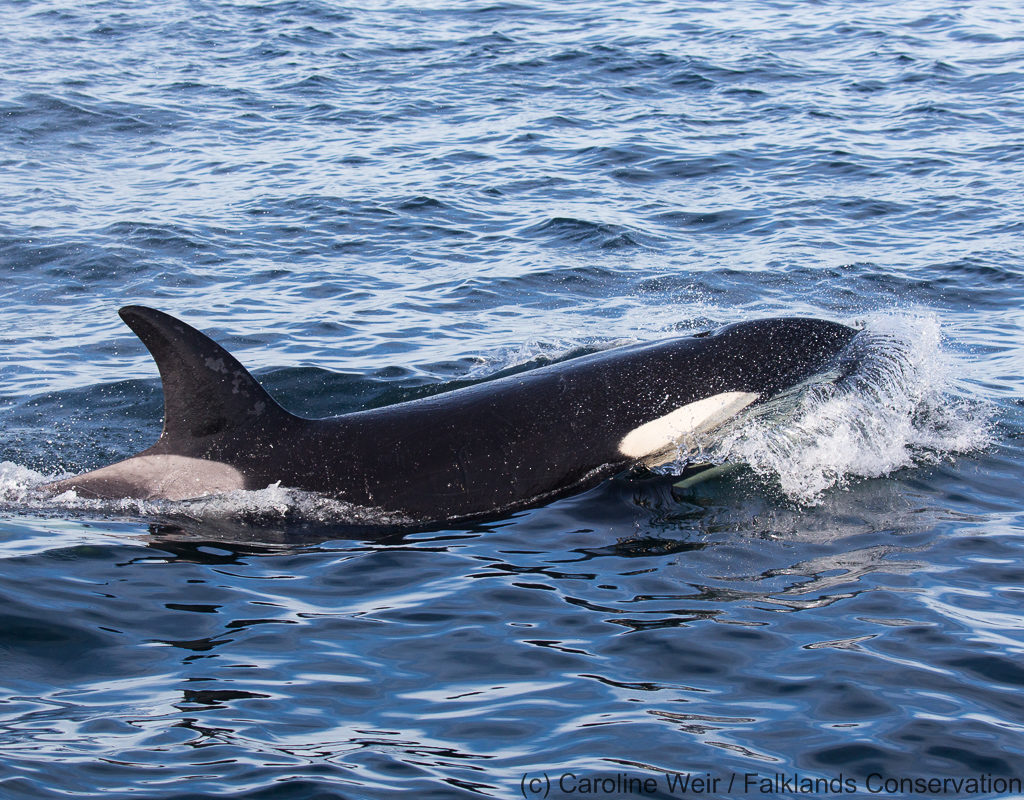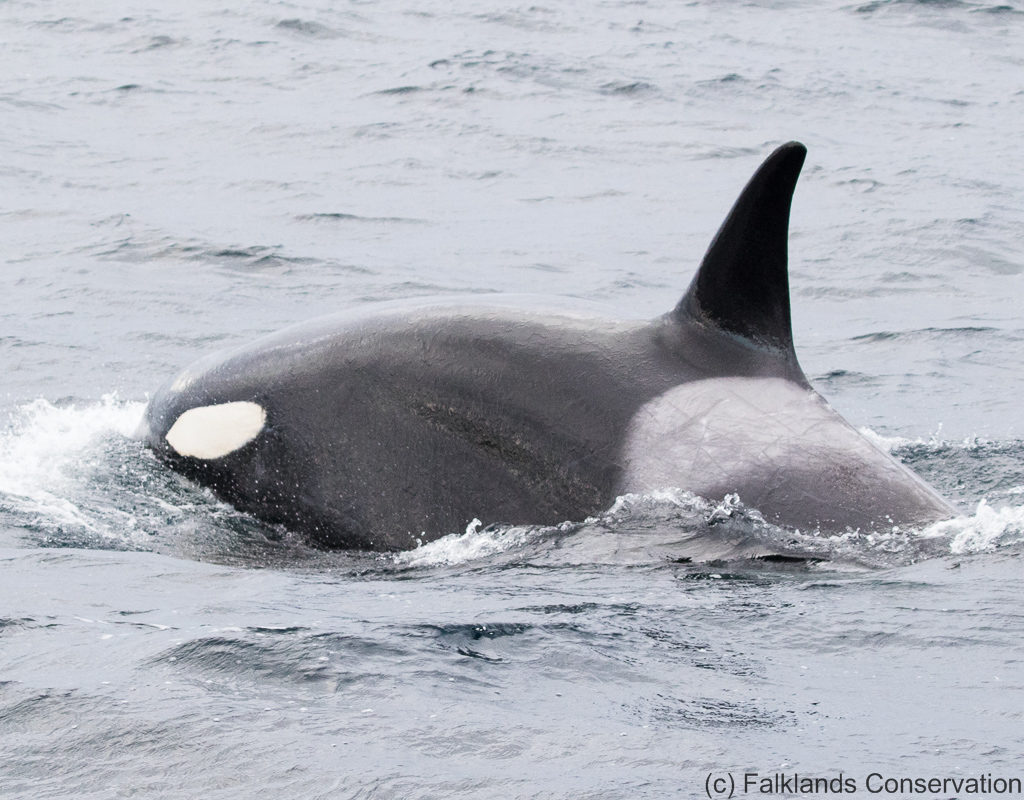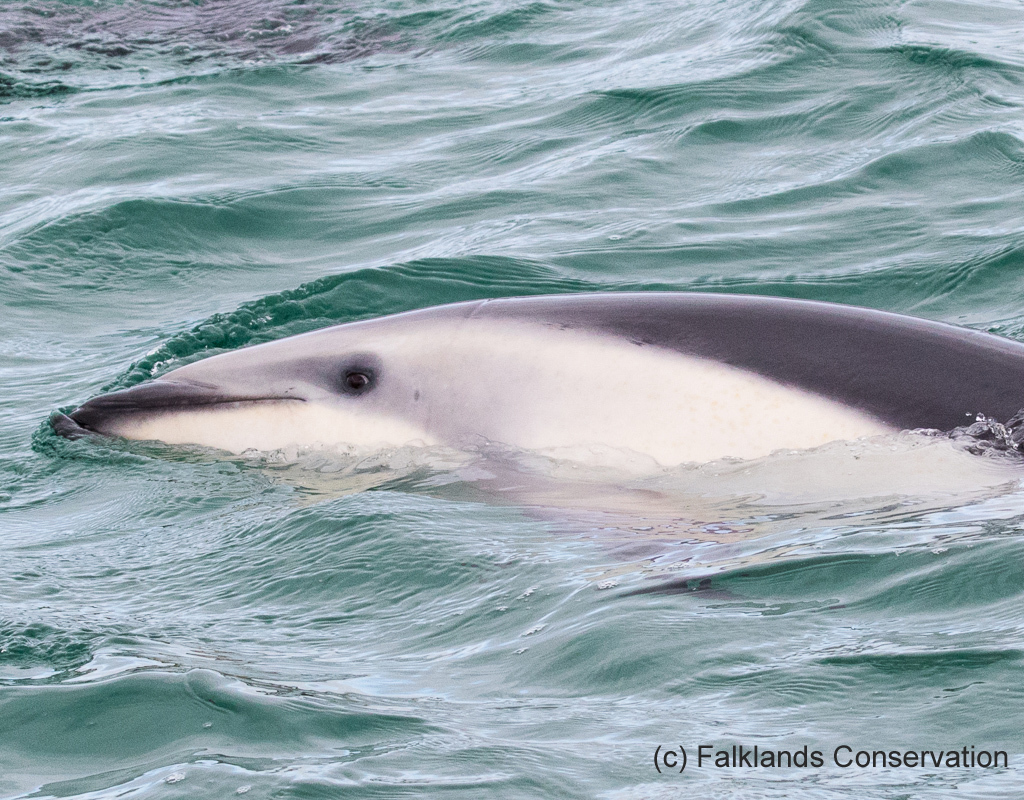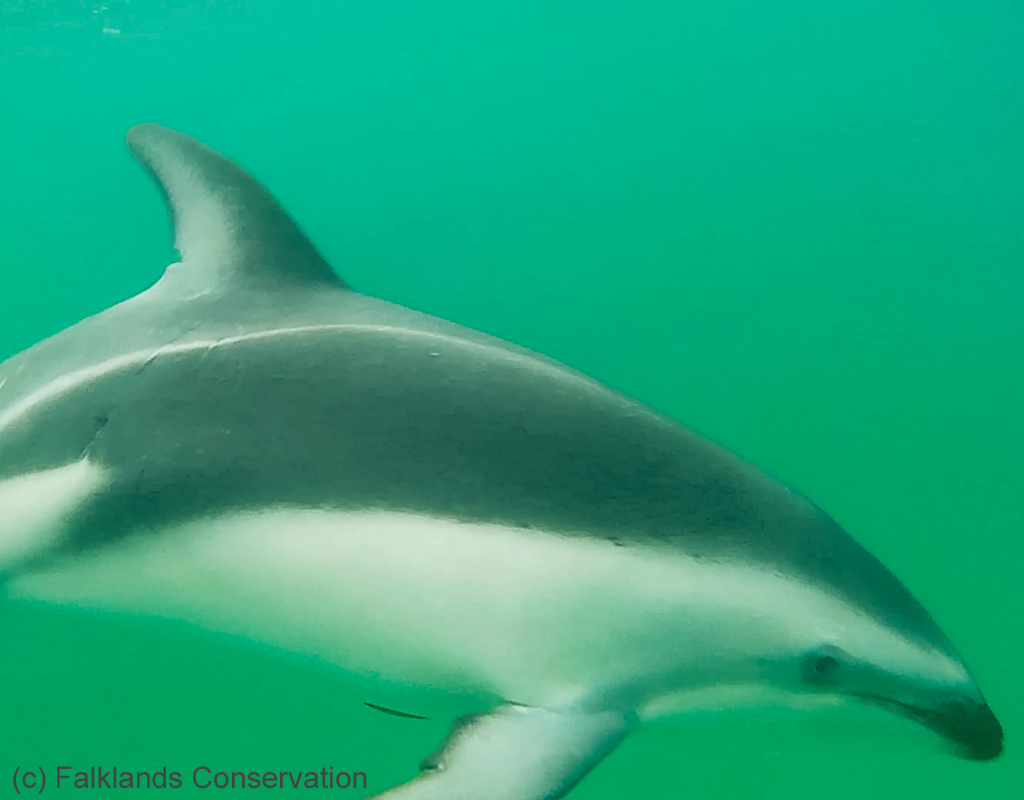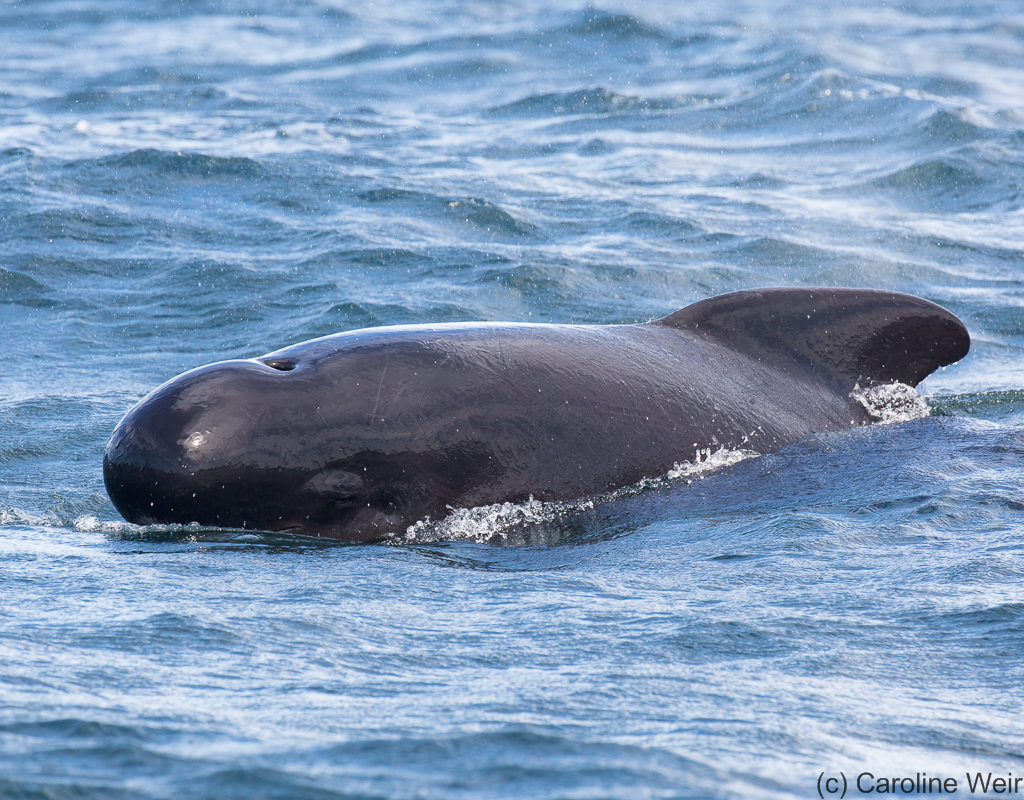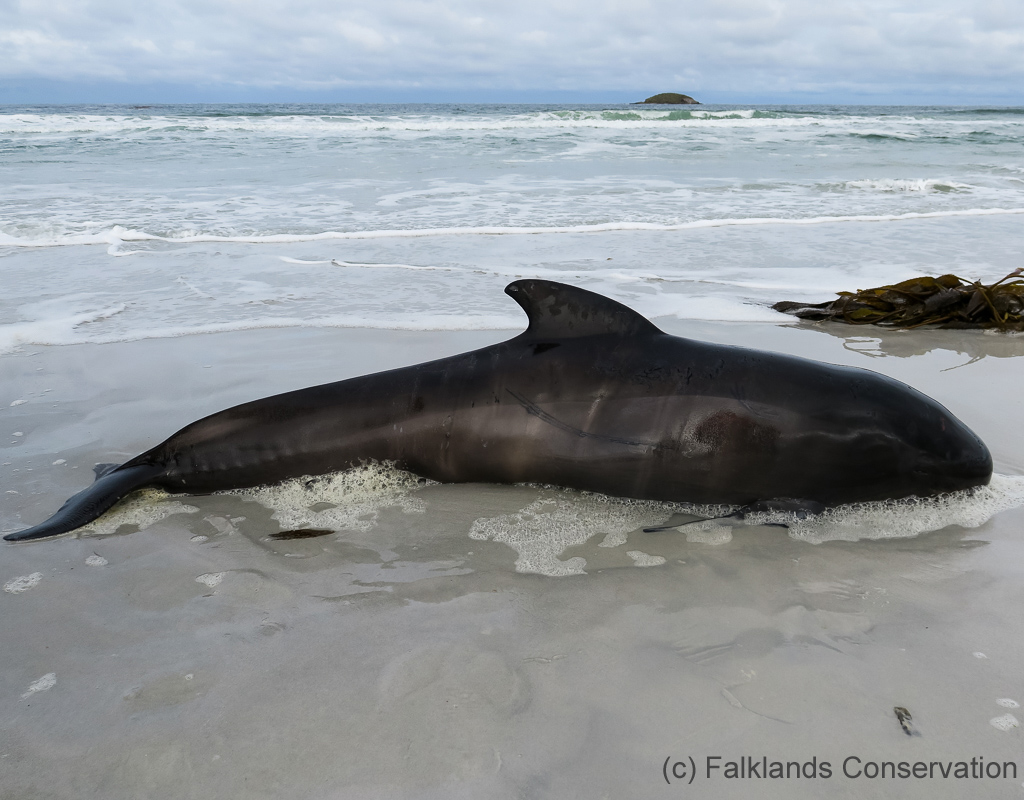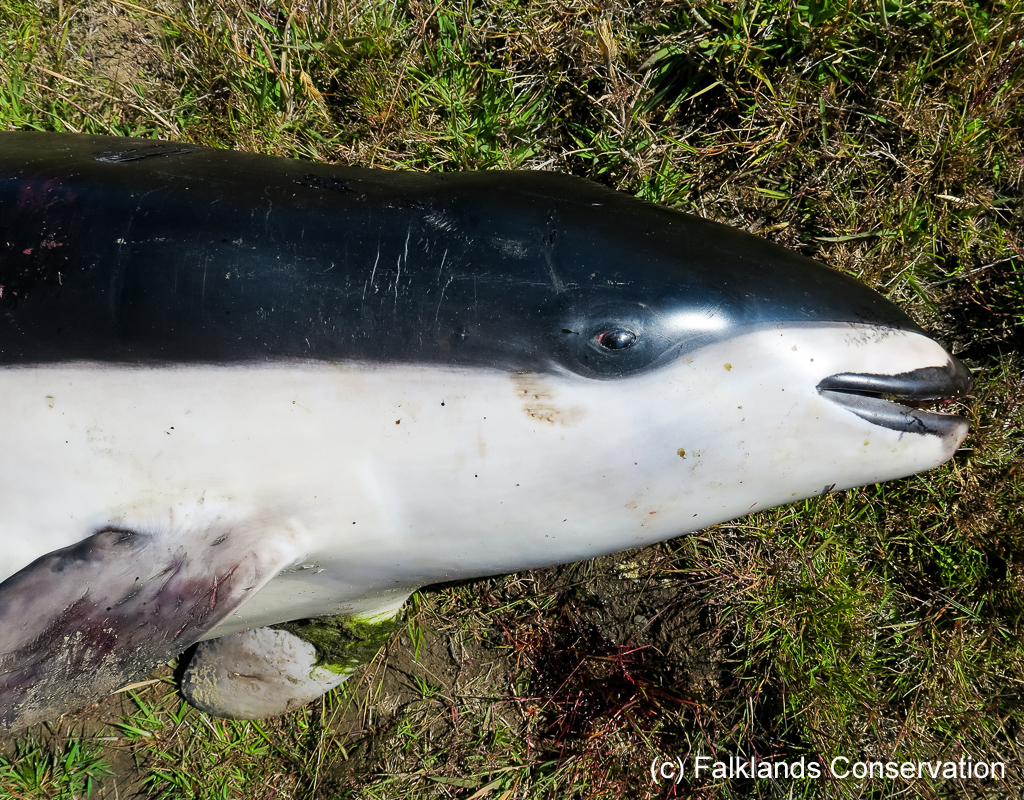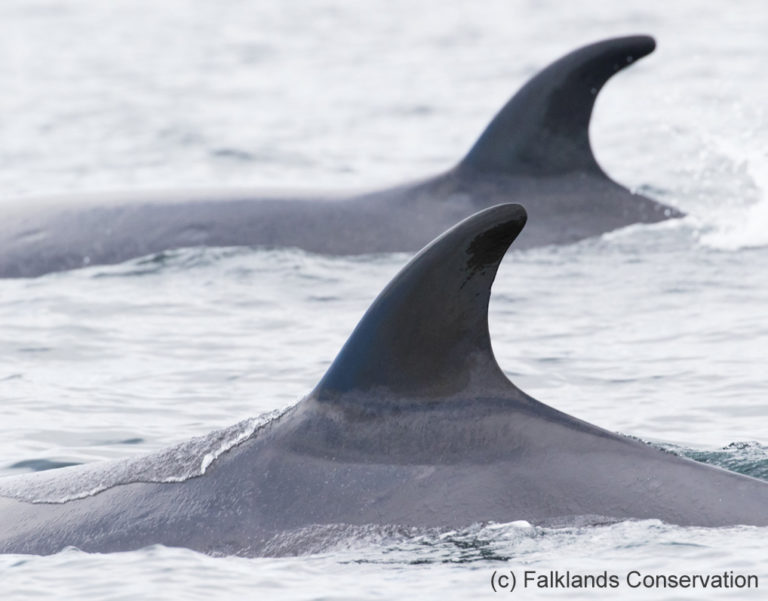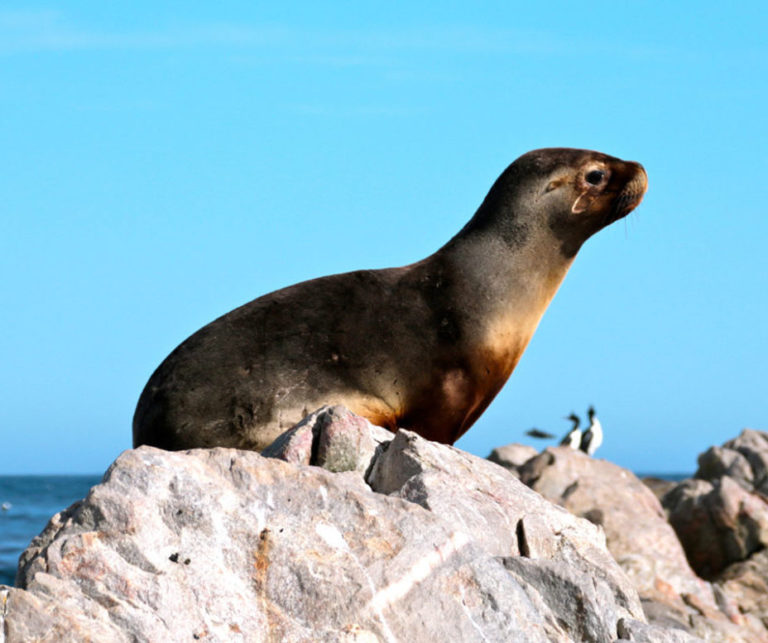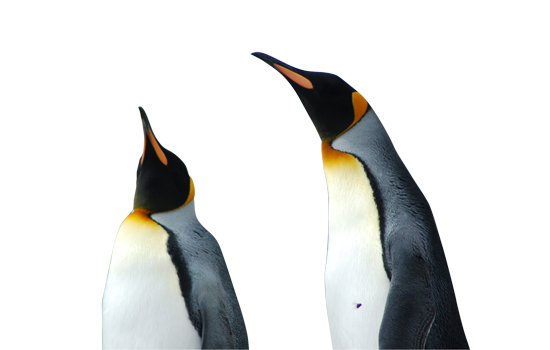Peale’s dolphin (Lagenorhynchus australis)
Peale’s dolphins only occur in South American shelf waters (<200m depth), including Chile, Argentina and the Falkland Islands.
They are classified as a Data Deficient species globally. In the Falklands they occupy a range of habitats, including open waters, large bays, and nearshore along the coast, particularly around kelp beds on exposed shores.
Key features include a tall, bi-coloured (paler grey along the rear) dorsal fin, dark face and chin, and a light grey tailstock stripe. Groups most often contain less than 15 animals, but can be larger. They often leap and bow-ride vessels.




